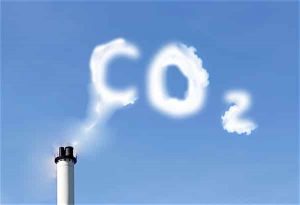 by Jonathan Neale
by Jonathan Neale
Global Climate Jobs
The circus is over. The suits are leaving Paris. There have been millions of words written about the text. But one fact stands out. All the governments of the world have agreed to increase global greenhouse gas emissions every year between now and 2030. [1]
Why? Because all the countries have agreed to accept the promises of all the other countries. Among the top 20 countries for emissions, here are the countries that have promised to increase their emissions a lot by 2030: China, India, Russia, Korea, Mexico, Indonesia, South Africa, Turkey, Thailand, Kazakhstan, United Arab Emirates, Vietnam.
And here are the countries in the top 20 that have promised to cut their emissions by about 1% a year between now and 2030: USA, European Union, Japan, Canada, Brazil, Australia, and Argentina.
The countries that won’t cut will increase a lot will increase a lot. The countries that will cut will not cut by much. You would never know this from the way the agreement has been reported by the UN or the media.
They phrase everything as a promise to cut emissions. But they phrase these promises in ways that lie. So some countries, like Korea and Mexico, promise to cut emissions compared to Business as Usual (BAU). Business as Usual means the current UN estimate of how much emissions will increase if nothing is done. So a promise to cut only compared to Business as Usual is a promise to increase emissions.
Other countries, like India and China, promise to cut emissions in terms of carbon intensity. Carbon intensity is the amount of carbon in fossil fuels that is needed to produce the same amount of work. Carbon intensity has been going down in the United States for a hundred years. It is going down all over the world. This is because we learn to use coal, oil and gas more efficiently, just like we learn to use everything else in industry more productively. So a promise to cut carbon intensity is a promise to increase emissions.
Or they play tricks with time. Russia promises to cut emissions by 25% by 2030, compared with emissions in 1990. But the Russian economy collapsed after 1990, so the emissions were much higher in 1990 than they are even now. A promise to cut emissions compared to 1990 by 25% is a promise to increase emissions by 30% compared to this year. [2]
Then there are the rich countries which promise to cut emissions by a lot. But they always choose a comparison date to make them look good.
The US, for instance, promises to cut emissions in 2030 by 26% compared to 2005. But US emissions in 2014 were already 9% lower than in 2005. So really they are only promising to cut emissions by 15% in the next fifteen years.
The European Union promises to cut emissions by 40% compared to 1990. But EU emissions are already 20% less than they were in 1990. So this is a promise to cut emissions by 20% in the next 15 years.
So some countries will increase emissions a lot and some countries will cut them a little.
The regions of the world that will increase emissions already make two thirds of global emissions. The regions that will cut emissions a little make one third of global emissions. [3]
You do the math. They are lying. Emissions will rise every year. The leaders of the world have betrayed humanity. All we have on our side is seven billion people. Now we go home and mobilize.



I disagree that cutting emissions by 1 – 1.5 percent per year is “only a little”. The environmental movement loves nothing more than to turn on itself and attack those that are actually doing something.
It would be nice if you actually show the math